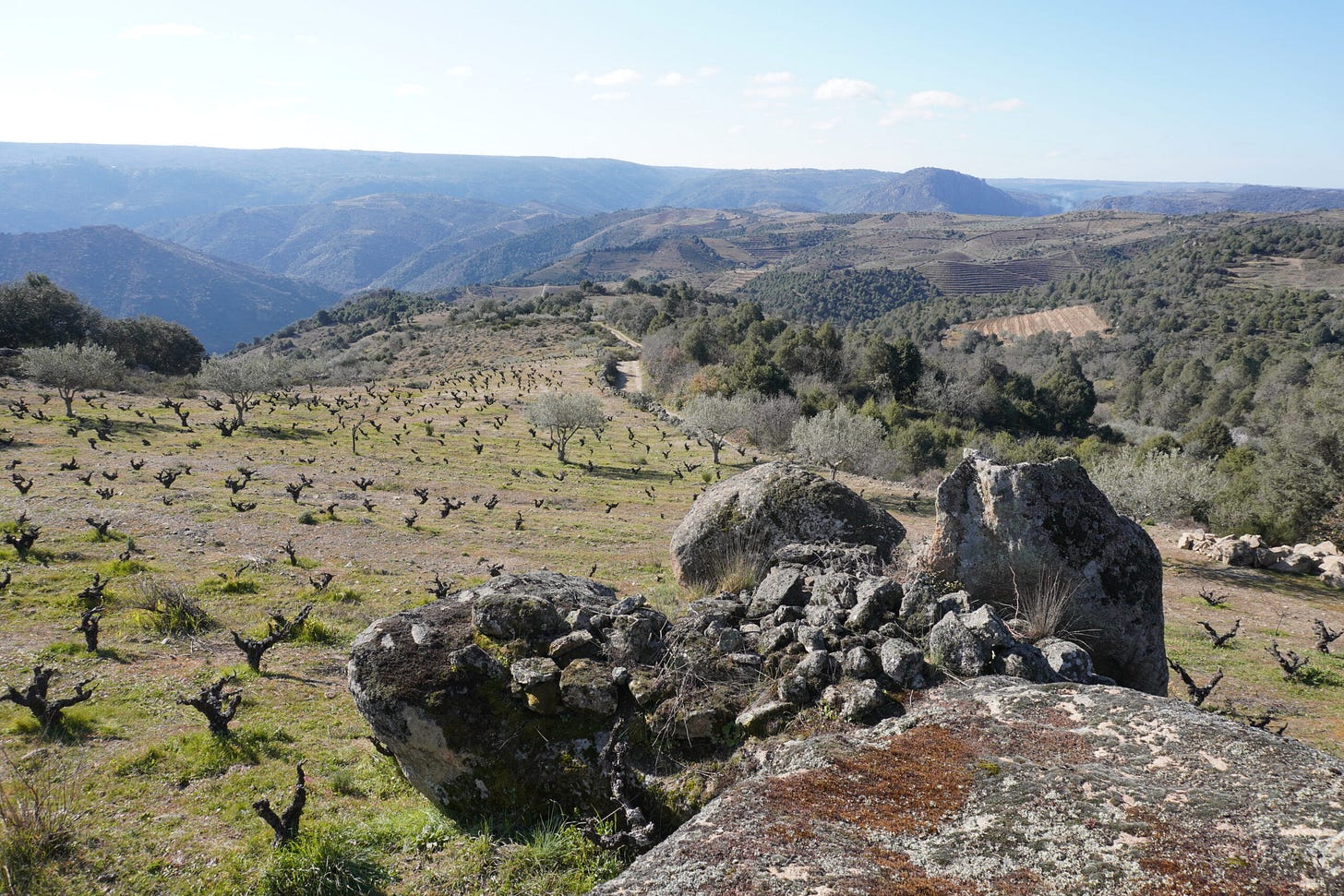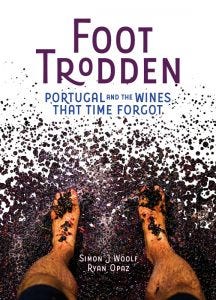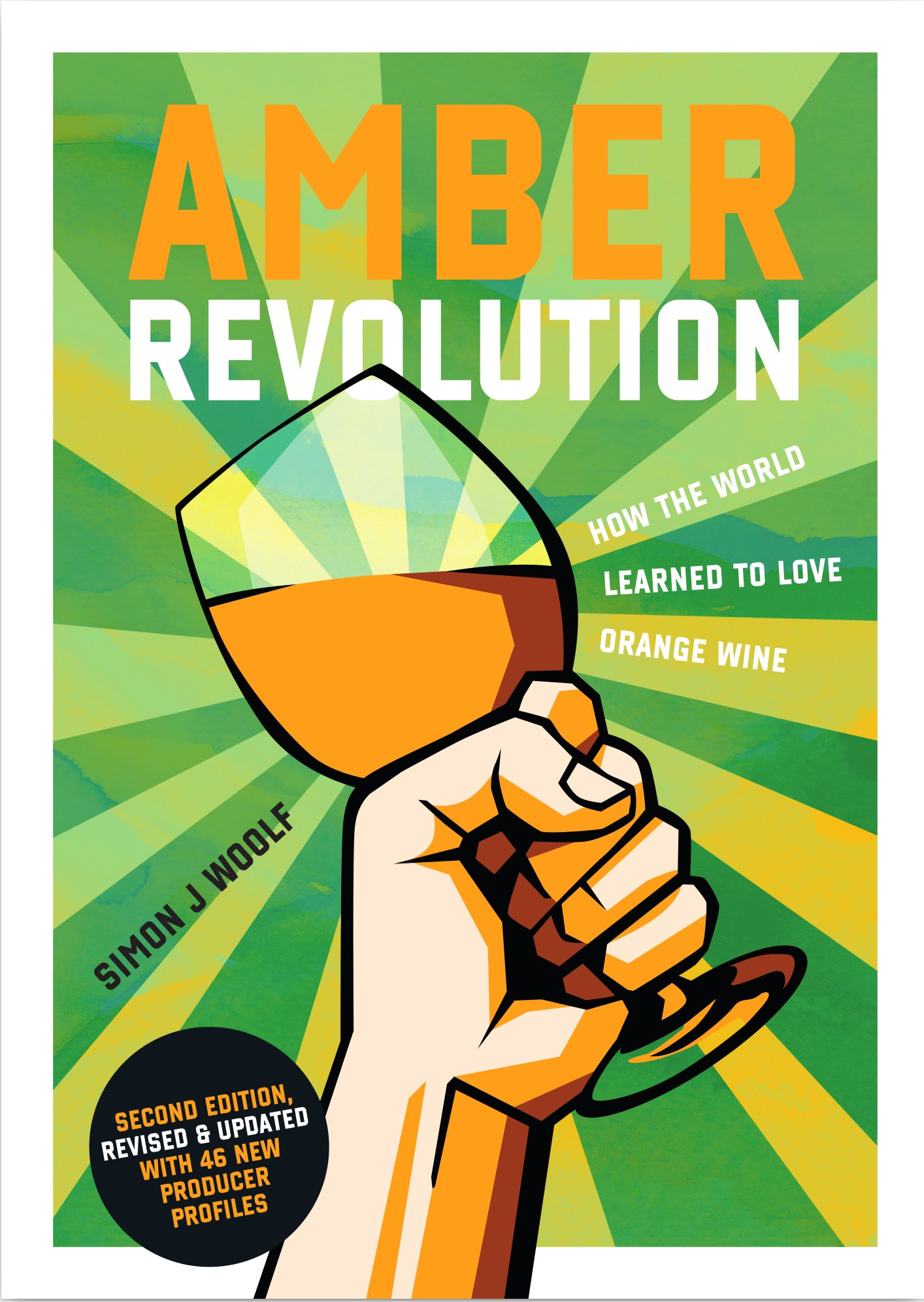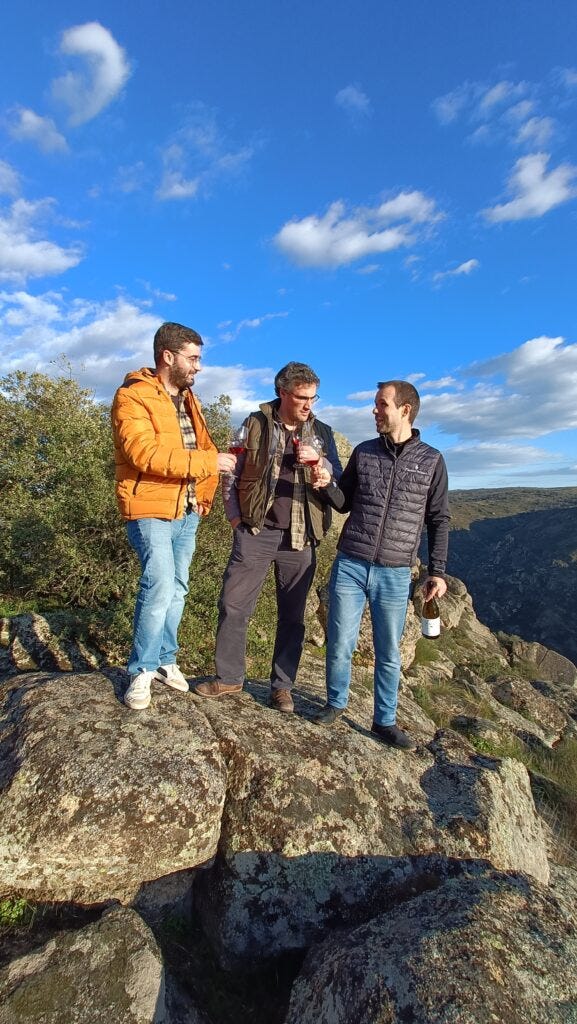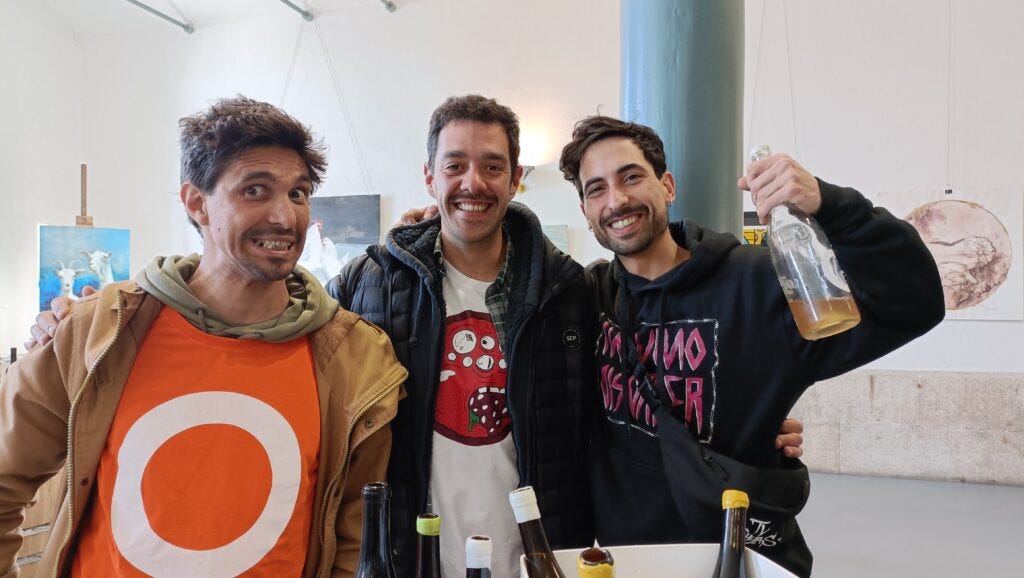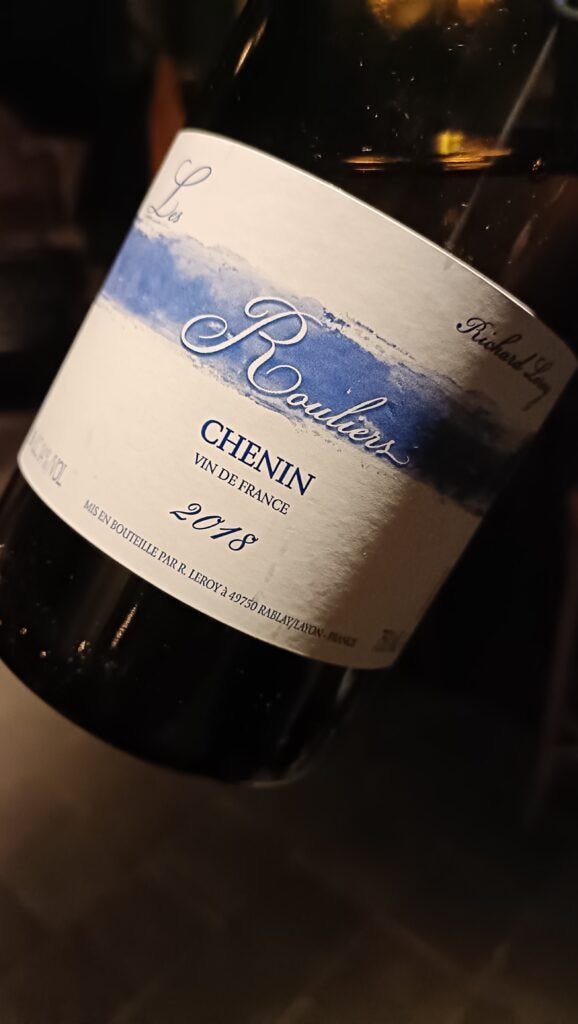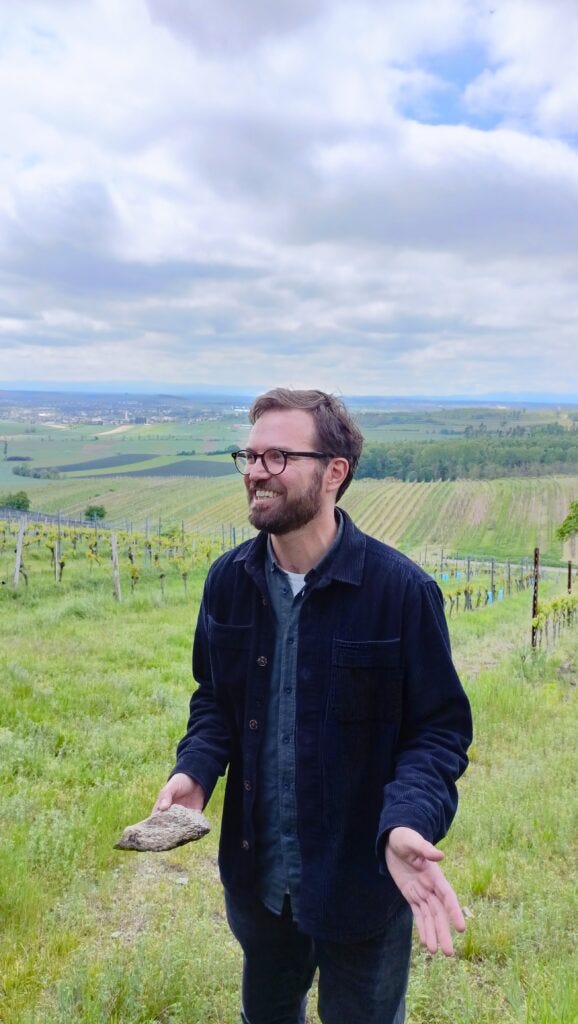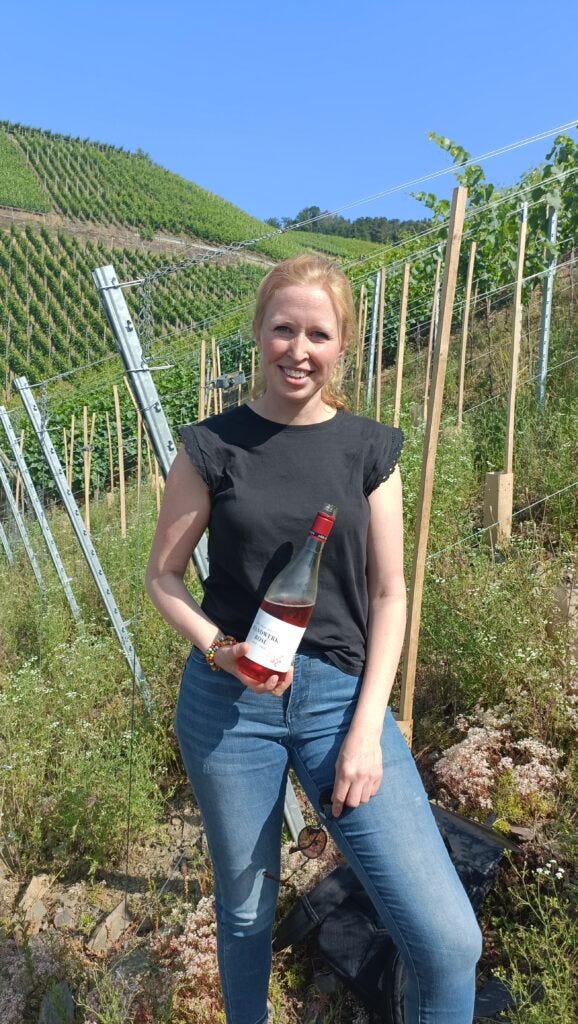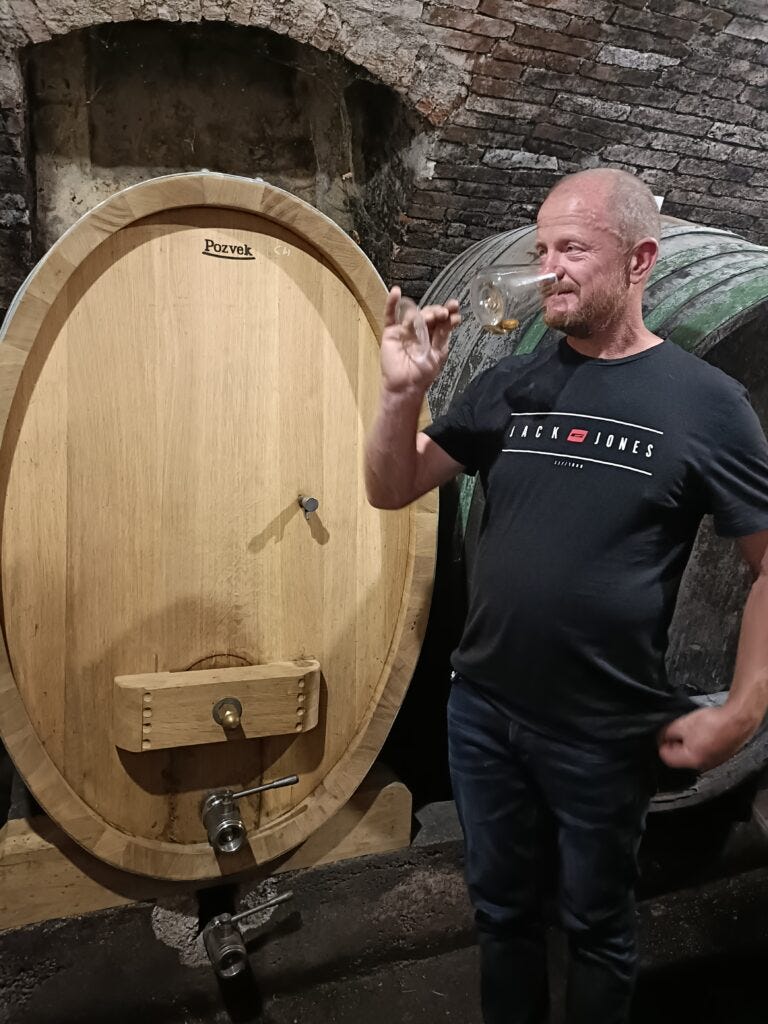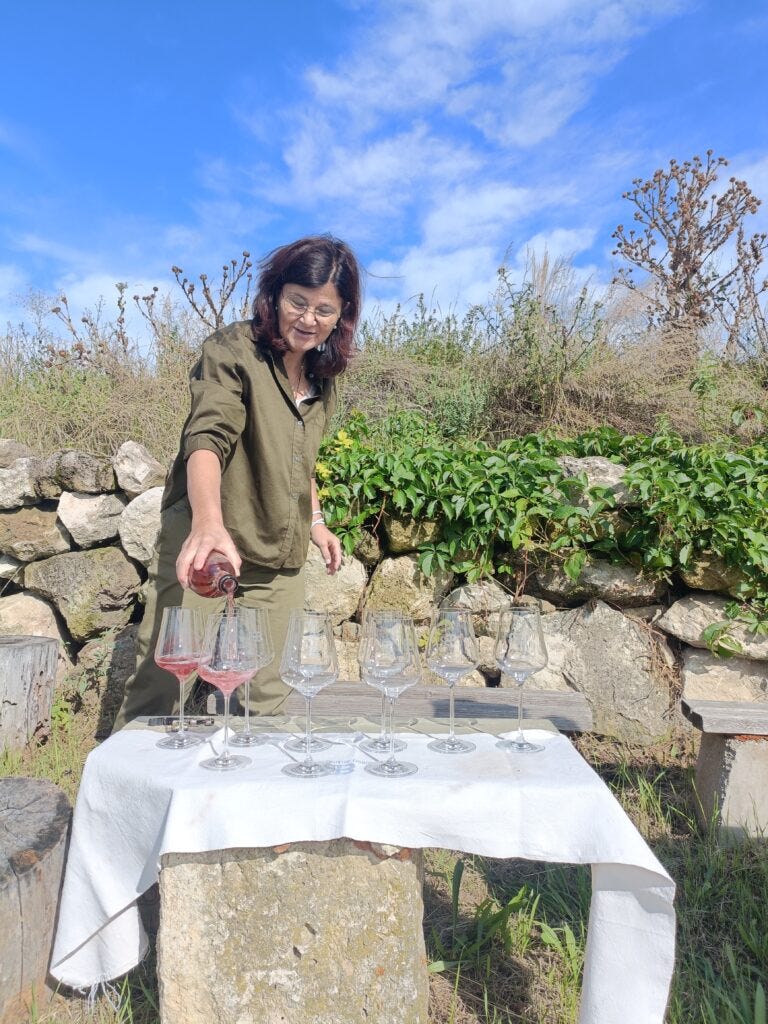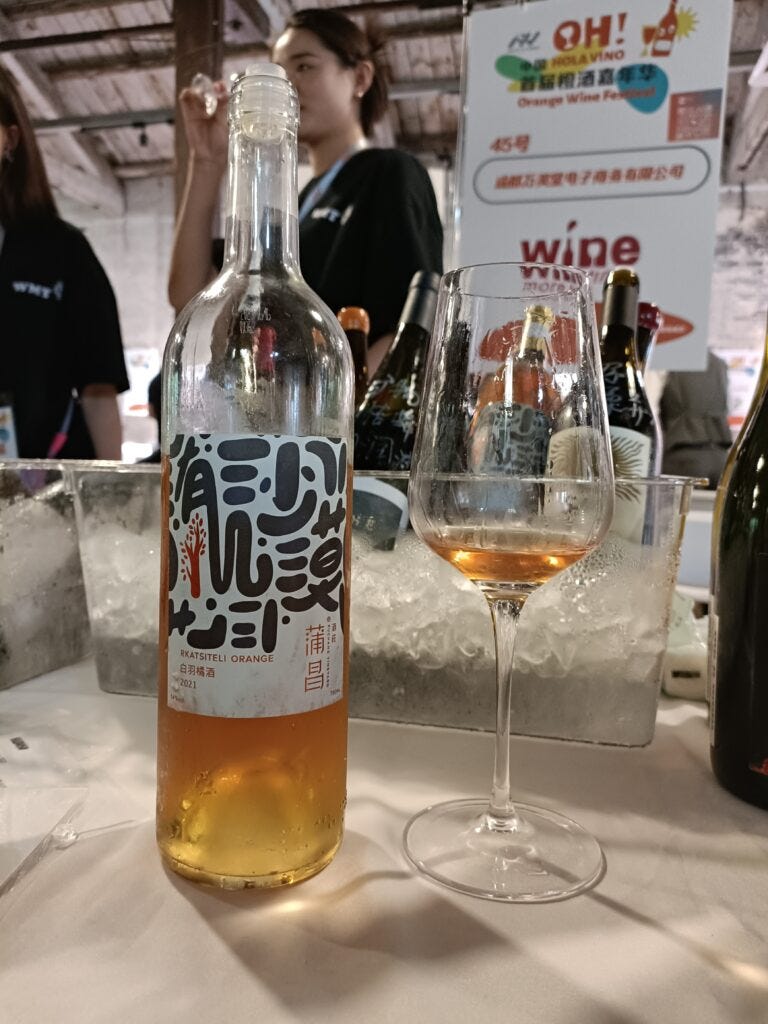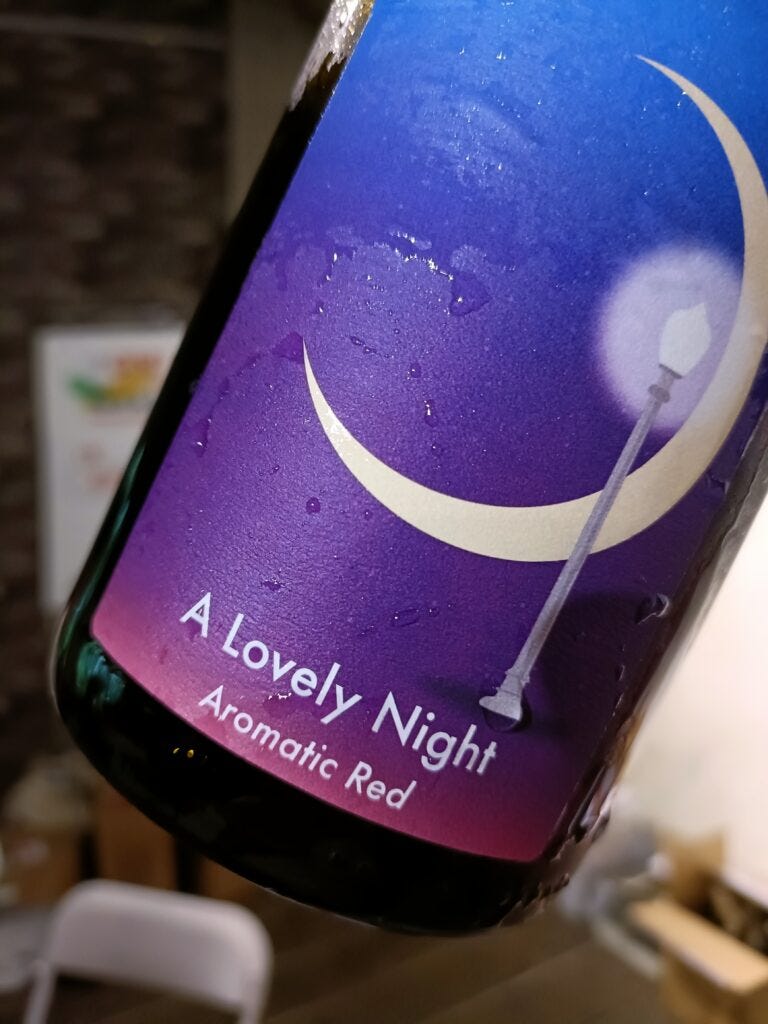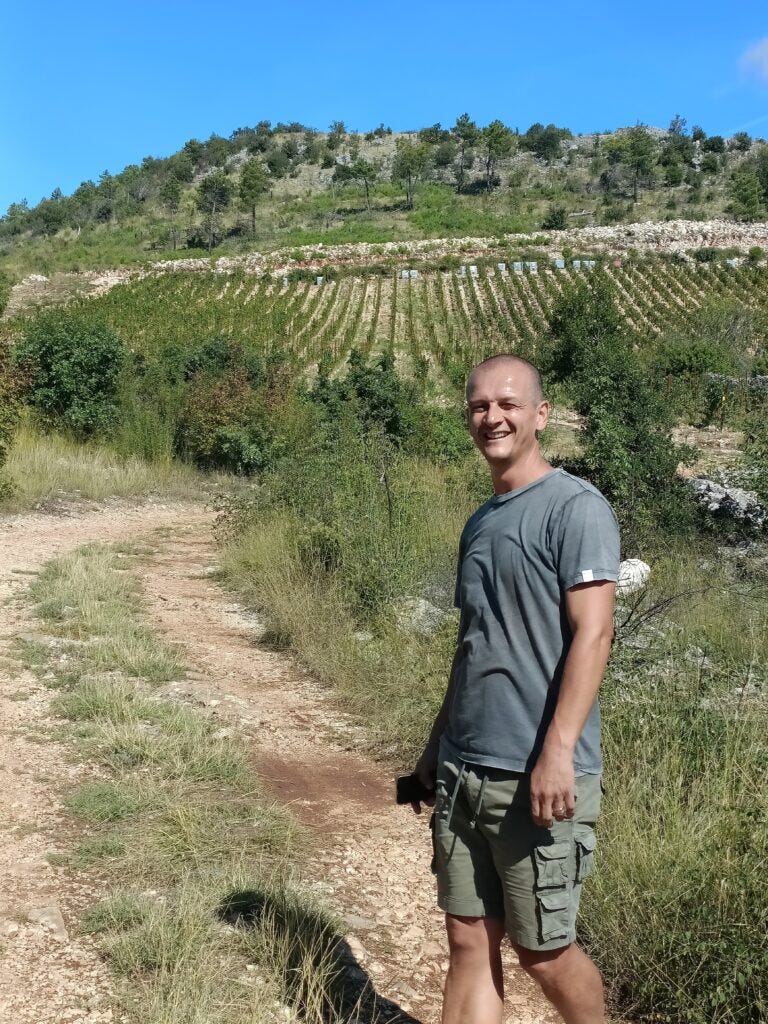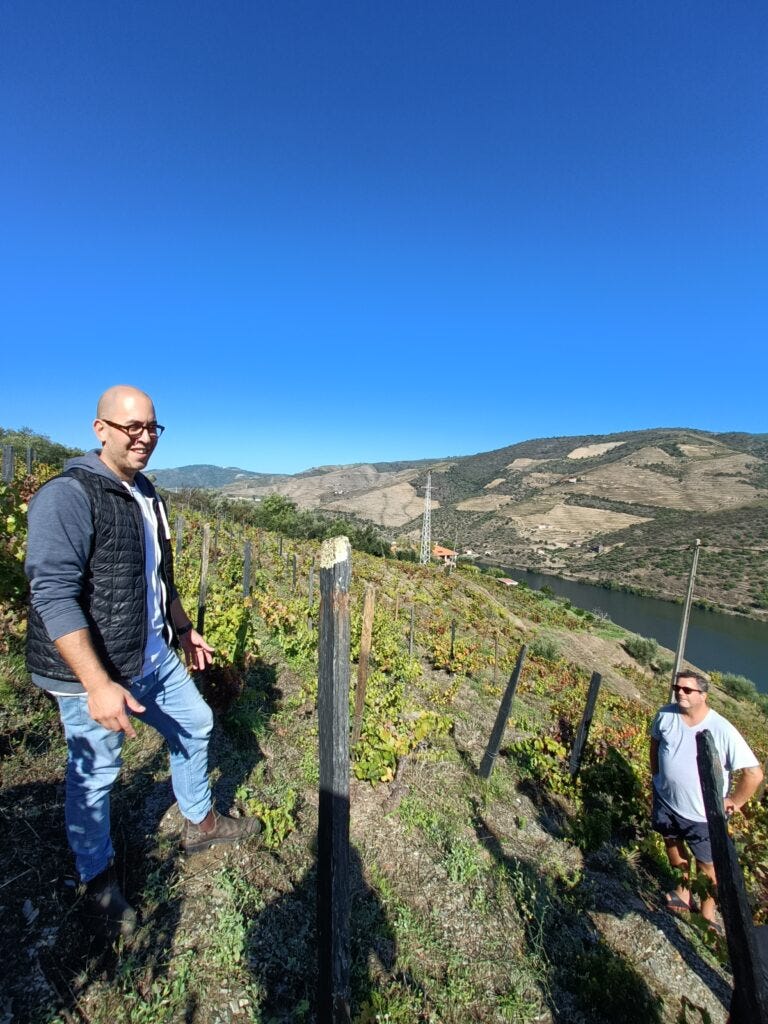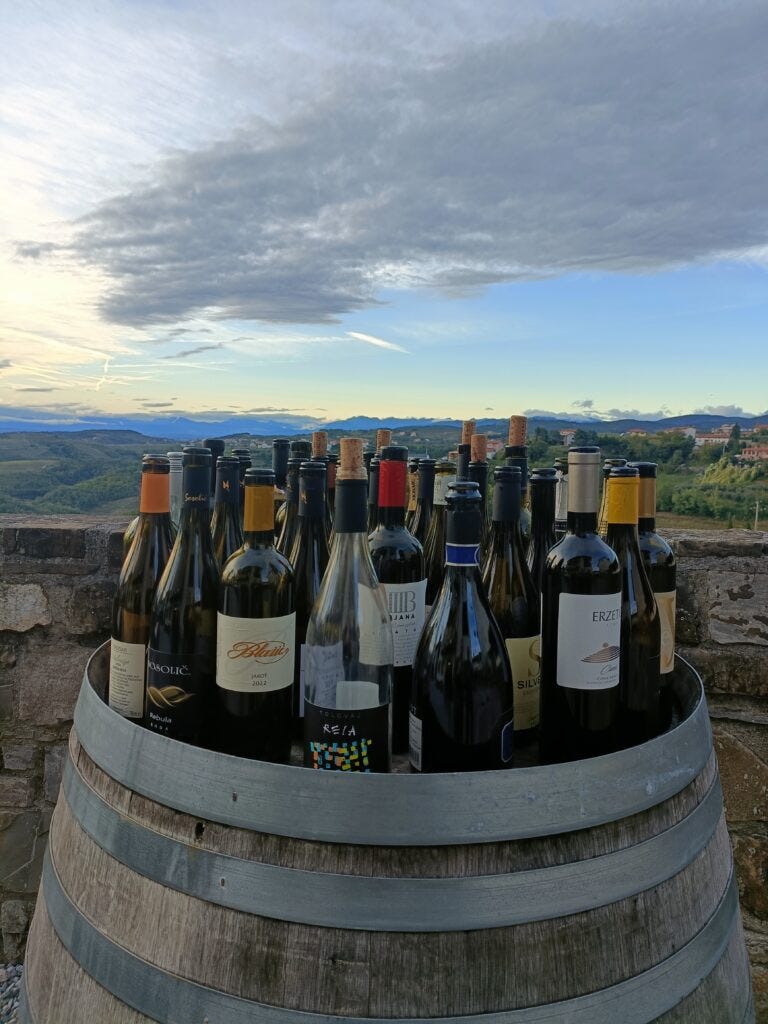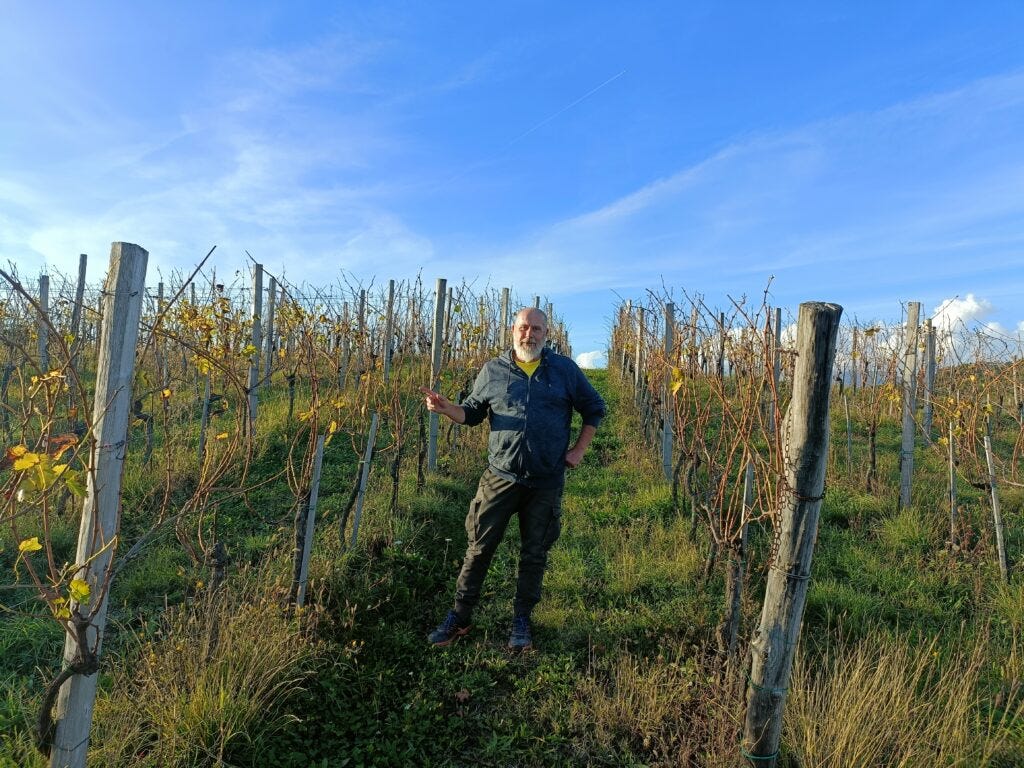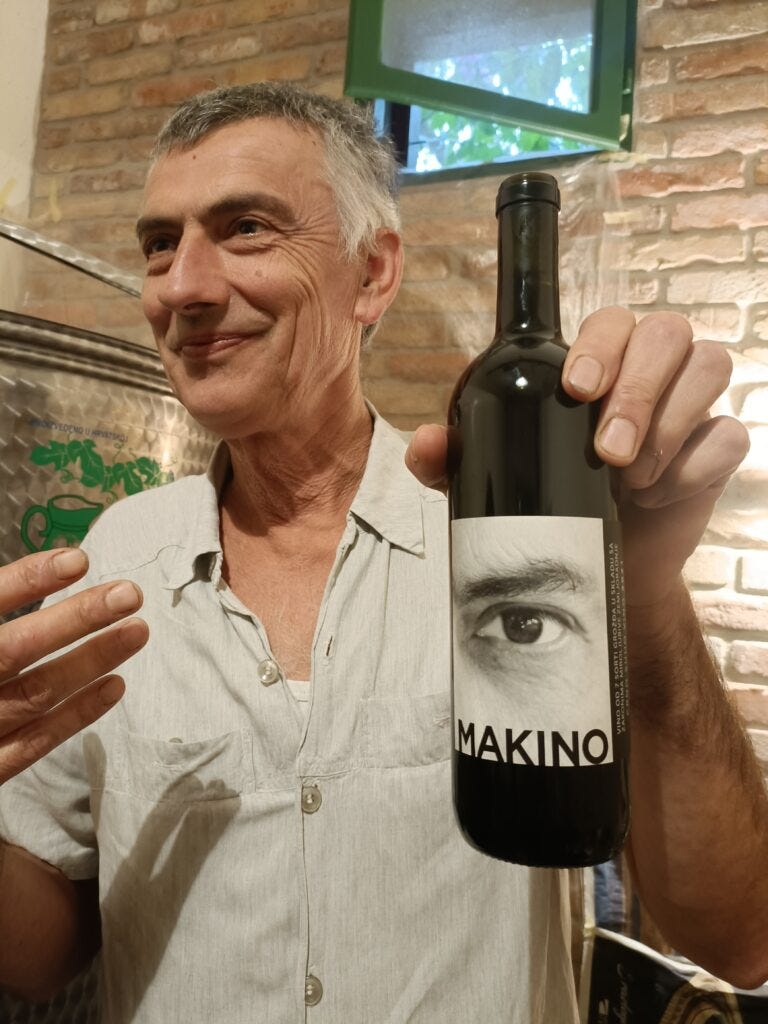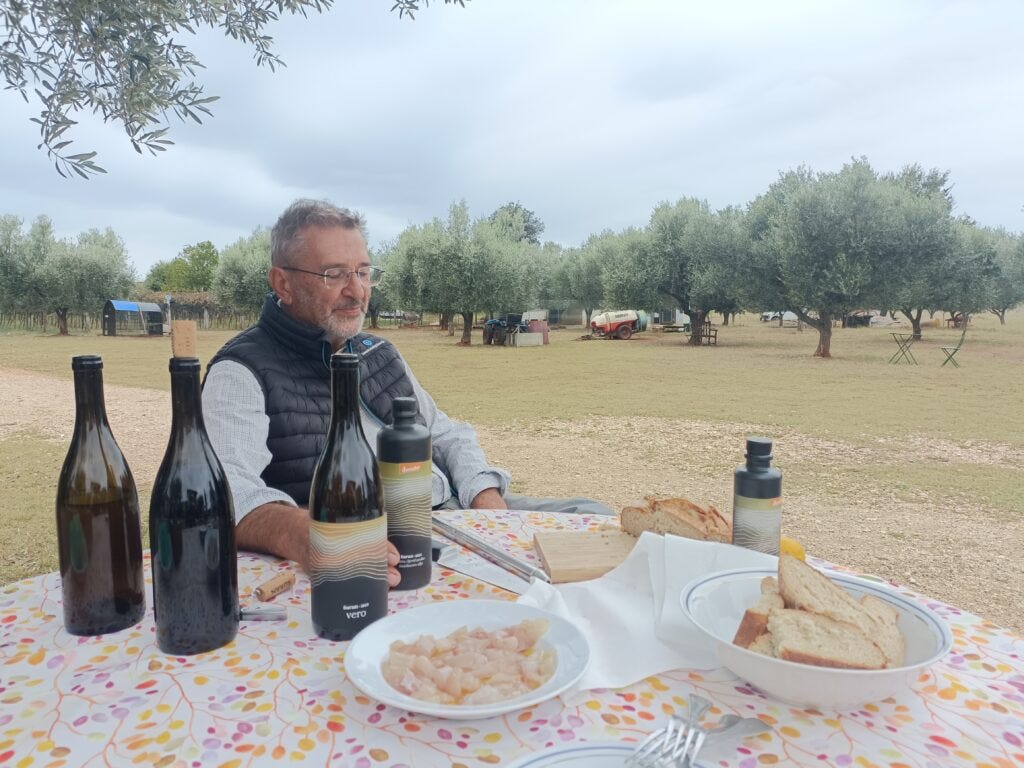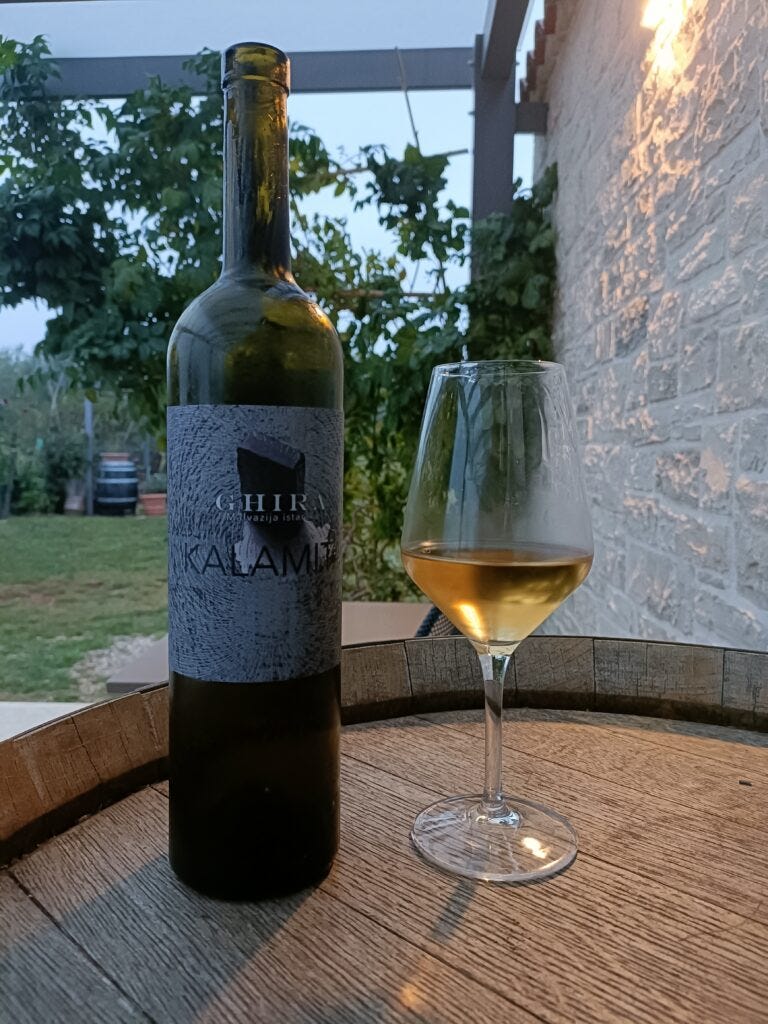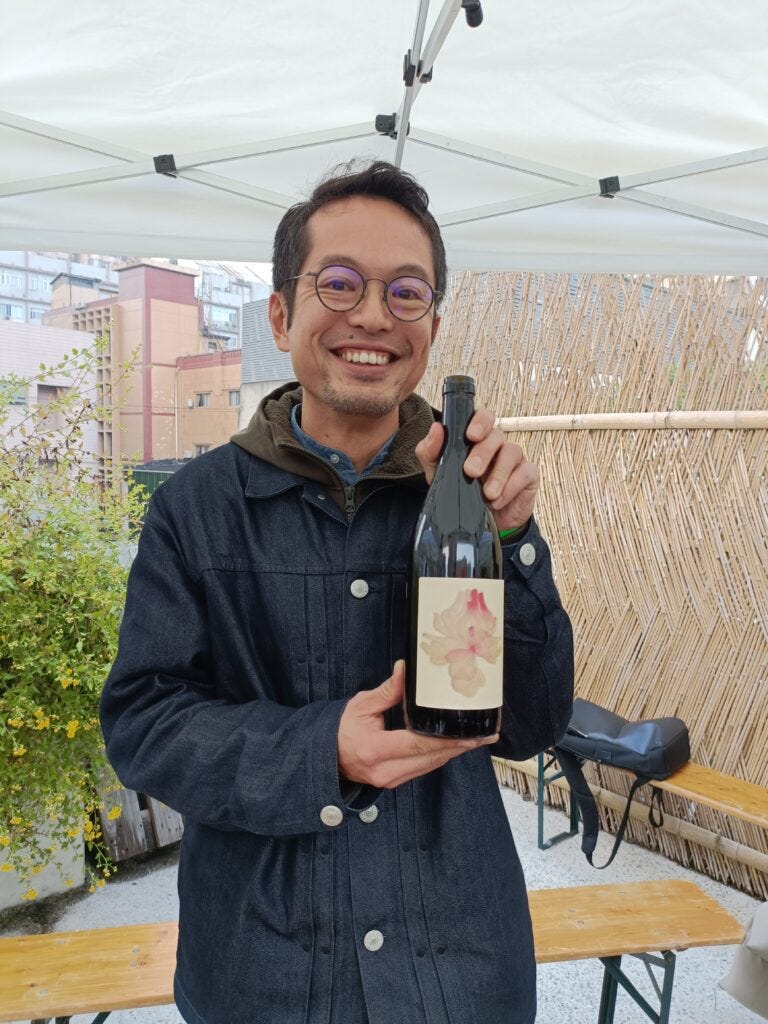2023 - My Year in Wine
Simon reviews his 2023 and lists a few of the more special experiences meeting winemakers and tasting natural wines
Every year brings new discoveries for me in wine. That's what keeps it interesting. I do my best to write about everything amazing. Some topics make it into a full length print article, others appear here, and a lot pops up as transient Instagram stories. But there's always more that doesn't make it. Photos, wines, entire topics that just remain on the cutting room floor. So as 2023 comes to a close, here is a little round up of some of the most wonderful moments, unexpectedly beautiful wines and exceptional people that I was lucky enough to meet.
This isn't a 'best of' and neither is it complete. It's a kind of random sampling of some of my favourite bits of 2023, with loads of substandard photos that I took on my phone. But they're better than nothing, and they do a decent job of telling the story.
My wine year really got going in February, with a trip to the wilds of Trás-os-Montes (lit. 'behind the mountains') in North-east Portugal. This vast inland region, almost as sizeable as Alentejo, is one of Portugal's forgotten wine lands, undervalued and largely unknown outside the country for decades. But, it turns out it's a treasure trove of centenarian vineyards filled with a quite different mix of grape varieties than you'd find in the neighbouring Douro. Touriga Nacional, for example, isn't from here and you won't find it in any old vineyards.
The climate is also radically different to the hot Douro. Here, more vineyards are at altitude (up to 750m), with cold winters and nights. When we visited towards the end of February, the evenings were well into minus temperatures (Celsius).
The names to know are Arribas Wine Company - Frederico Machado and Ricaro Alves, Picotes Wine (António Picotês, Menina d'Uva (Aline Domingues) and Casa do Joa (Jorge Afonso). Most of these wines are light and refreshing with low alcohol - another big surprise, compared to the prevailing style in the Douro.
Then it was back to Porto for the always fantastic Simplesmente Vinho fair. Where I finally got to meet all three of the chaps behind Vinhos Aprt3, one of the most infamous new natural wine names in the country. I'd heard a lot about these guys - not all of it good. There was talk that they were randomly buying in grapes, that it was all marketing, that the wines weren't very good. In contrast, I met three passionate and intelligent guys, who in early 2023 were still holding down their day jobs (nurse, sommelier and farmer respectively) while they built their wine business. They spoke with integrity and knowledge about the growers they work with, their own vineyards in the Lisboa region that were planted this year and the new winery they're building. Their Ambar (skin contact Moscatel) wows me every year. It's just beautiful.
Now, I'm not much of a one for unicorns, but apparently I got lucky when a bottle of Richard Leroy's Chenin coincided with my glass. The energy and concentration were stunning, and it had that kind of Burgundian struck match nose that we all love so much. The next day I checked prices and nearly fell off my chair. Bottles of the 2018 Rouliers (if you can find them) won't leave a lot of change from €500.
A couple of months later, I spent a few days touring through Austria and Slovakia. Hot on my list was to visit Andrej and Nadja Miklušičák (Naboso) in the village of Svätý Jur just outside Bratislava. Working out of two beautiful old stone cellars, they make some of the most consistently enjoyable wines I've had from this corner of Slovakia. And yes, another wonderful orange:
There was also time to catch up with Franz Weninger in Mittelburgenland (Austria), properly this time, since when I visited in 2022 he had Covid and we had to converse at a distance and conduct the tasting outdoors. This photo is actually just over the border into Hungary, in the Stein vineyard. I still haven't figured out quite how Franz makes such delicious wines for such fair prices. Then again, not everything works out. When we talked about his orange wine "Franz plays", he explained that there's no 2022 because the barrel developed too much volatile acidity. His wife Petra, who takes responsibility for much of the vineyard work, said "I work all year to give you great grapes and then you fuck it up in the winery". She did have a smile on her face though.
Talking of Hungary, I've known Peter Wetzer for a decade and it took that long to finally make it to his garagiste winery in Sopron. Count on me making a return visit before another 10 years are up. I know few other winemakers who can make Kékfrankos sing like he can.
Skipping forward to June, a visit to the Ahr that was supposed to happen in 2020 finally took place in 2023. And there were two winemakers who made me fall in love with Spatburgunder AKA Pinot Noir all over again. Michael Fiebrich and Julia Bertram are your go-tos for the most pure, elegant and refined examples in the region
Staying on the Pinot Noir theme, I spent a relaxed July afternoon and evening in Štajerska (Slovenian Styria) with Srečko Šumenjak (seen with his father in the photo), having tasted his latest vintage at Karakterre when I realised I'd previously neglected some world class winemaking. Much as I love his white and orange wines, a 2020 Pinot Noir blew me away in terms of its perfume and elegance.
Later in the summer, I had the privilege of taking a group of Dutch sommeliers to Burgenland. We visited many of my good friends, but also a much loved name in biodynamics that I'd previously failed to catch up with. Birgit Braunstein wowed us with her wines, her stunning courtyard and winery under the house, and above all else by pouring us a delicious pét-nat at 09:30 in the morning high up in the Leithaberg vineyards. Who couldn't love that?
Switching continents, the first of two visits to Shanghai in 2023 yielded some amazing discoveries. Yes, the Chinese are making natural wine now - and some very good ones at that. This orange Rkatsiteli 2021 from organic certified winery Puchang really wowed me. It was so typical of the variety, just with more intensity and ripeness that I would normally expect in Georgia.
I also discovered the wines of Ian Dai (bottled under the label Xiaopu), an ex-sommelier who makes wine from rented plots in different parts of China - including Ningxia and Shangri-La. Everything I've tasted from his hand has a wonderful vitality and lightness of touch. This was just one such example:
2023 was also the year when I finally met Bariša Škegro in person. Bariša has been sending me his wines for years, and his orange Žilavka is a firm favourite every year. A last minute invite to Herzogovina gave me a glimpse of his vineyards, and the realisation that he has some of the best terroir in the entire region, with terraced vineyard high in the hills - where almost everyone else has their vines planted in the flat plains. There is huge potential here!
It was definitely the year for long overdue visits. Luis 'Pedrocs' (his concise alias for the full Luis Pedro Cândido da Silva) is one of those winemakers who crept up on me by stealth. It wasn't until 2022 that I realised his Quinta da Carolina wines were quite exceptional. Checking my photos and tasting notes, I'd had them in the glass years before, but somehow the message didn't hit home. Luis' day job is as a winemaker for Niepoort, but he also has time to make some of the most focused Douro blends I've ever tasted from his own small plots in the Cima Corgo. The wines have lift and freshness, but don't lack Douro heft and complexity. Sadly, like just about every progressive winemaker in the region, he is gradually being forced out of the Douro denomination and his wines are increasingly bottled as IVV (the Portuguese table wine category).
Later in the autumn, I visited two new natural wine gatherings in Slovenia. Both had a wonderful intimacy and emotion to them, and both yielded some wonderful discoveries. Bon Vino is the initiative of Jan Novak and family. The inaugural fair, held in the expansive gardens and courtyard of the family's Domacija Novak, was like the best insider tip you've ever received. Iconic winemakers from Slovenia and its border regions in Italy and Croatia came to support the event which raised money for Slovenia's flood victims. I'm reliably informed it will happen again next year.
Dejan Kukanja is based in the Karst region, and is really a micro-producer - his total output is around 5,000 bottles a year. But it's been a long time since I tasted a Vitovska that had quite such focus and and freshness. Good luck finding the wines, but you're in for a treat if you do.
I squeezed in another seriously long overdue visit to Simona and Borut Blažič, a couple who always seem a bit under the radar despite making some of the most precise and typical examples of Brda orange wines I know. (Don't confuse their estate with the other Blažič on the Italian side of the border) As well as tasting some wonderful wines, I also discovered that Simona is an amazing cook. Walking down the hill to their winery involves crossing the Italian/Slovenian border - there's nothing apart from some stone markers buried in the ground to let you know. However there is now a more annoying reminder - the Blazics have been ordered to take down the awning at the entrance of the winery (which helps keep grapes cool during harvest), because it stretches into Italy and has no planning permission there...
The second new wine fair was Vndima, a post-harvest celebration organised by two much loved names in Brda - Klinec (Aleks and Simona) and Štekar (Janko and Tamara). New to me were two outstanding old vine blends (one orange and one red) produced by Jacopo Stigliano in Emila-Romagna . Both had such satisfying complexity, combined with a free, unhindered expressiveness.
While staying in Vipava, I was tipped another new (to me) name: Santei. Matej and Sandra Biziak left their corporate lives to create a small winery in the hills above Vipava. I loved their skin contact Rebula and the orange blend 4 Legs, but what really wowed me (yes, it seems to have been a theme in 2023) was their Pinot Noir 'El Padron'. The kind of quality and elegance which is now unaffordable in Burgundy, but it seems with sensitive biodynamic farming and hands -off winemaking can be achieved in western Slovenia. Chapeau!
My friend Zdravko Andželevski (a well known chef based in north eastern Slovenia) suggested a little side trip to Croatian Istria, and promised he would take me to small natural wine growers I'd never heard of. And he managed that with flying colours. Marinko 'Maka' Pavlović only makes one wine, a deliciously spicy yet refreshing red field blend of around 10 varieties, but he's mentored many other budding biodynamic growers in the region. His energy is quite irrepressible.
Perhaps not quite as obscure is Rino Šuran, who has an extremely isolated biodynamic farm just inland from Rovinj. His wines were fascinating, but also completely sold out. So we left with only a bottle of olive oil as a memento - plus fond memories of Rino's oustanding ceviché and much interesting discourse on farming, wine and tourism.
Finally, we dropped by Damir Mihelić's winery Ghira in Novi Grad, to sample his amphora-fermented Malvajiza. These are big wines and I appreciate Damir's decision to start harvesting earlier, so that they retain their all important acidity. Look out for Madura 2021 or 2022 (not yet bottled), these are amongst the best yet produced at this organic estate.
I was back in Shanghai in November, to give the keynote at an outstanding orange wine symposium 'Skin-2-Skin', masterminded by Debra Meiburg and expertly coordinated by her right-hand Alex Webster Aranchikov. There's a nice report here. I took the opportunity to also attend the natural wine fair Ziran, held on a surprisingly chilly day on a Jing' An rooftop. It was great to meet Michael Gross, who is making quite stunning low intervention wines just over the Austrian border into Štajerska, Slovenia (under the label Vino Gross). He's the brother of Johannes Gross, who runs the more well-known Weingut Gross in Sudsteiermark. Also attending Ziran was Shun Minowa, a young Japanese winemaker who's been quietly building a cult reputation in Emilia-Romagna. He's worked with Giulio Armani (La Stoppa, Denavolo) and Alberto Anguissola (Casè), but now has his own project. It's very much in a similar style to wines such as Ageno or Casè's Bianco, but with its own incredible precision and energy.
I have left so much out, but this is already such a long post that no-one probably read through to the last line. Congratulations if you did, and here's to a blinding 2024.


